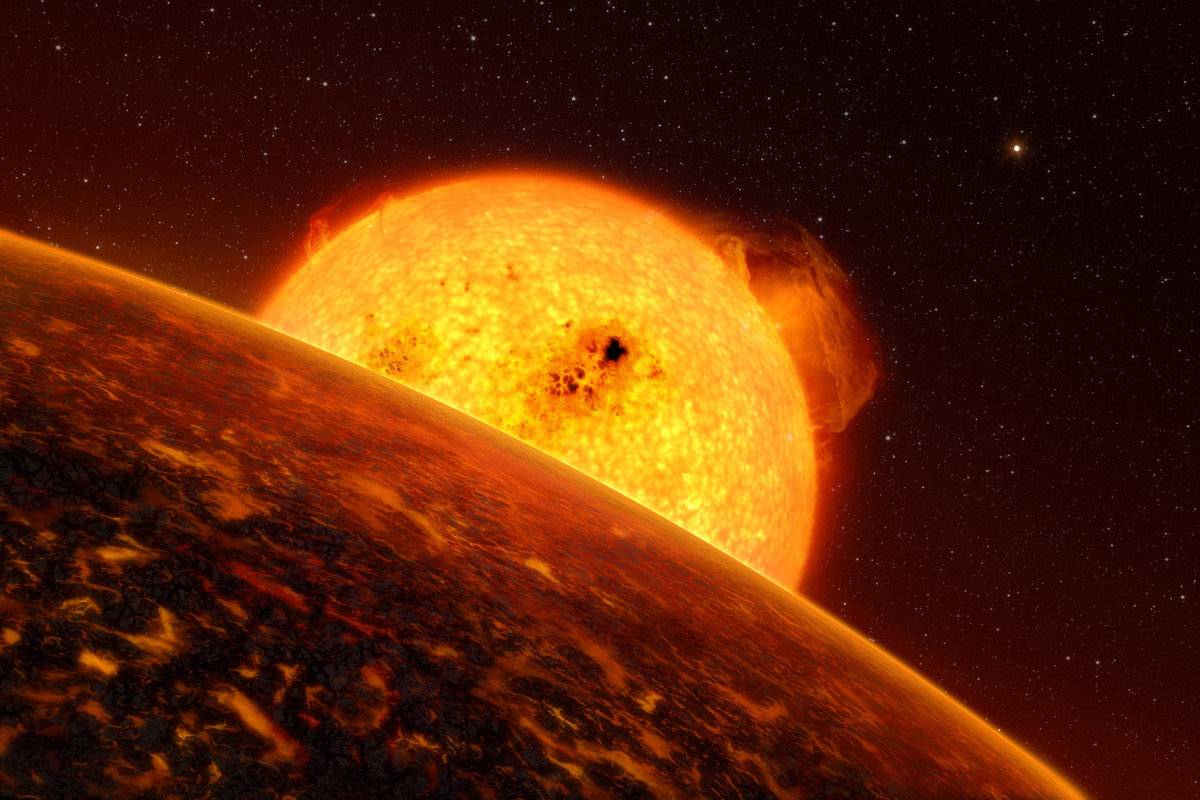Emily Lakdawalla • Jan 06, 2010
Evaporating exoplanet
CoRoT-7b was the first unambiguously rocky planet to be discovered and was quite small, at under five Earth masses. But a press release issued today suggests that its history probably has little to do with Earth's. Instead, CoRoT-7b may be all that's left of an originally Saturn-sized body, most of whose mass has been blown away by the parent star.
The release states, quoting scientist Brian Jackson:
"There's a complex interplay between the mass the planet loses and its gravitational pull, which raises tides on the star," Jackson explained. Those tides gradually change the planet's orbit, drawing it inward in a process called tidal migration. But closer proximity to the star then increases the mass loss, which in turn slows the rate of orbital change. After accounting for the give-and-take of mass loss and tidal migration, the team finds that CoRot-7b could have weighed in at 100 Earth masses -- or about the heft of Saturn -- when it first formed. At that time, it orbited 50 percent farther from its star than it does now.
The science is very cool, but it seems clear that CoRoT-7b isn't now, and never has been, a place where life could thrive. This is not the exo-Earth we're looking for. Let's keep searching!

Found in February 2009 by ESA's planet-hunting CoRoT spacecraft, CoRoT-7b is five times heavier than Earth and has approximately the same density, so it must be made of rock and metal, like Earth. However, it orbits so close to its star that it is likely covered with a lava ocean.
Support our core enterprises
Your support powers our mission to explore worlds, find life, and defend Earth. You make all the difference when you make a gift. Give today!
Donate

 Explore Worlds
Explore Worlds Find Life
Find Life Defend Earth
Defend Earth

